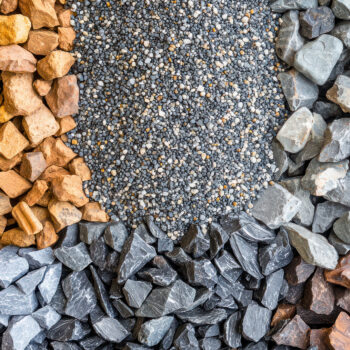
A Green Cement Plant in Redding
The Fortera company has operated a “green” cement plant in Redding since 2024. This plant uses patented processes to collect the majority of the carbon dioxide generated to make its cement. That carbon dioxide is then turned into more cement material by copying the processes used by corals and mollusks to make their hard structures and shells. In the end, the only carbon dioxide released into the atmosphere at the Fortera plant comes from the fossil fuels used to heat the limestone in the first place. This represents a significant improvement in the development of cement that does not contribute to climate change.
The Critical Mineral is Vaterite
Calcium carbonate is the primary component of seashells. The limestone used to make cement actually comes from beds of ancient seashells compressed during geological processes. Most of this mineral as used by marine animals exists in the form of calcite or aragonite, but a third form that is useful in cement is called vaterite. At the molecular level, vaterite is round and porous, and when it’s a component in cement it helps the resultant concrete to cure without shrinking.
About 15 years ago, the company that became Fortera figured out how to take carbon dioxide and turn it into vaterite. Since cement plants produce lots of carbon dioxide, connecting their technology to an existing cement plant allows Fortera to capture plenty of this greenhouse gas to then convert into vaterite-based cement. Company CEO Ryan Gilliam states that “by actually capturing that [carbon dioxide], we effectively double the amount of product.” Increasing the final amount of cement created helps to pay for the cost of capturing and converting the carbon dioxide. The end result is a more ecologically sound cement with lower costs than comparable “green” products.
Fortera has already produced cement for concrete projects by Caltrans and the cities of Santa Cruz and Berkeley. Their cement is also used by many building contractors around the state of California. New and larger plants modeled on the design of the Redding plant are soon coming on line, so you too may end up using this “new and improved” cement product.
Combine Innovation with Preservation
After investing in a carbon-conscious cement, you want to make sure that the concrete made with it lasts for the long term. Epoxy flooring from California Custom Coatings preserves, beautifies, and protects all forms of concrete floors, structures, walkways, and foundations. No matter what color you want for that concrete, green or otherwise, we provide design consultation that ensures you end up with the look and style that you prefer. Call or contact us online today for a free visit and quote at your property or job site.
- On February 13, 2025


